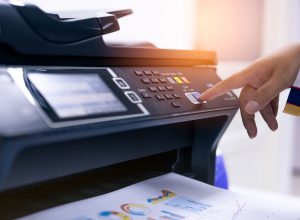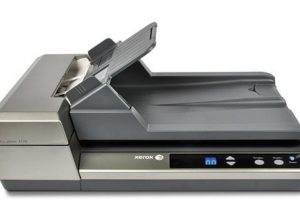Contents
- 1 Understanding OCR Technology and Image Scanning
- 2 How OCR Technology Works
- 3 Key Components of OCR Processing
- 4 Image Scanning Techniques
- 5 File Format Considerations
- 6 Advanced OCR Features
- 7 Quality Control and Accuracy
- 8 Common Applications
- 9 Best Practices for OCR Implementation
- 10 Technical Specifications
Understanding OCR Technology and Image Scanning
Optical Character Recognition (OCR) technology transforms printed or handwritten text into machine-encoded text, enabling users to edit, search, and store documents digitally. This sophisticated process combines advanced imaging techniques with artificial intelligence to interpret visual information.
Core Components of OCR Systems
Modern OCR systems utilize multiple processing stages to achieve accurate text recognition. The preprocessing stage enhances image quality through techniques like deskewing, noise reduction, and binarization. Subsequently, segmentation algorithms isolate individual characters, while feature extraction identifies unique characteristics of each symbol.
Advanced Recognition Algorithms
Contemporary OCR implementations employ deep learning models, particularly Convolutional Neural Networks (CNNs), to achieve recognition rates exceeding 99% for printed text. These systems can process multiple languages, various font styles, and complex layouts simultaneously, making them invaluable for document digitization workflows.
| OCR Processing Stage | Key Functions | Technology Used |
|---|---|---|
| Image Preprocessing | Noise removal, contrast adjustment | Digital filters, thresholding algorithms |
| Character Segmentation | Isolating individual characters | Connected component analysis |
| Recognition | Character identification | Neural networks, pattern matching |
Image Quality Requirements
Optimal OCR results require source images with a minimum resolution of 300 DPI (dots per inch). Documents should be scanned in grayscale or color mode for complex materials, while binary mode suffices for basic black-and-white text. Modern OCR systems can compensate for moderate image defects through adaptive preprocessing algorithms.
Output Formats and Integration
OCR systems typically generate output in standard formats like searchable PDF, Microsoft Word, or plain text. Advanced implementations support structured data extraction, automatically identifying elements such as tables, headers, and columns while maintaining the original document’s layout integrity. APIs enable seamless integration with document management systems and workflow automation tools.
How OCR Technology Works
OCR processes images through several distinct stages to achieve accurate text conversion. Initially, the system captures the image through scanning or digital photography. The software then preprocesses the image, adjusting brightness, contrast, and removing noise to optimize text recognition.
Key Components of OCR Processing
The core OCR process involves text detection, character segmentation, and character recognition. Advanced algorithms analyze patterns in the image, identifying individual characters based on their unique features and comparing them against extensive character databases.
| OCR Stage | Function | Output |
|---|---|---|
| Image Acquisition | Capturing document image | Raw digital image |
| Preprocessing | Image enhancement and cleaning | Optimized image |
| Text Detection | Locating text areas | Text region coordinates |
| Character Recognition | Converting visual text to digital | Machine-readable text |
Image Scanning Techniques
Professional scanning requires proper hardware configuration and technique. Resolution should be set to at least 300 DPI for optimal OCR results. Document positioning must be straight and flat to prevent distortion. Color settings should match the original document type – grayscale for black and white texts, color mode for colored documents.
File Format Considerations
OCR software typically outputs text in various editable formats including .txt, .doc, .docx, and .pdf. The choice of output format depends on the intended use of the converted document. PDFs maintain formatting while plain text files offer maximum compatibility.
Advanced OCR Features
Modern OCR systems incorporate machine learning algorithms that improve recognition accuracy over time. They can handle multiple languages, various fonts, and complex layouts including tables and columns. Some systems offer automatic language detection and format preservation.
Quality Control and Accuracy
OCR accuracy depends heavily on input image quality. Clean, high-contrast originals typically achieve 98-99% accuracy rates. Post-processing tools help identify and correct potential errors, while confidence scoring highlights uncertain character recognitions.
Common Applications
OCR technology serves numerous practical applications in various industries:
- Document digitization in libraries and archives
- Invoice processing in accounting departments
- Passport and ID verification at borders
- License plate recognition in parking systems
- Text extraction from scientific papers
Best Practices for OCR Implementation
To achieve optimal results, follow these technical guidelines:
- Maintain consistent lighting during scanning
- Clean scanner glass regularly
- Use appropriate resolution settings
- Configure language settings correctly
- Implement quality control procedures
Technical Specifications
For professional OCR implementation, ensure your system meets these minimum requirements:
- Scanner Resolution: 300-600 DPI
- Image Format: TIFF, PNG, or JPEG
- Color Depth: 24-bit for color, 8-bit for grayscale
- Storage: Sufficient for high-resolution images
- Processing Power: Multi-core processor recommended


![How DPI Affects Image Quality: Understanding Scanner Resolution [Complete Guide]](https://yoopst.com/wp-content/uploads/2025/07/dpi-300x220.png)



